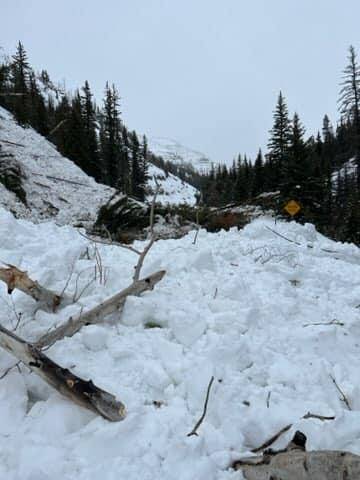The state of Utah has experienced incredible snowpack this past winter season. However, as beneficial as those numbers are, there are hazards that may also come as the weather warms up and melting begins.
In the recent Manti-La Sal National Forest newsletter, being safe and prepared for the range of geological hazards that may be caused by melting snow was highlighted. First focusing on avalanches, it was explained that there are two different types of snow avalanches, which are sluffs and slabs.
A sluff is a small slide of dry, powdery snow that will move as a formless mass. This makes them less dangerous than the latter avalanches, the slabs. They occur when the weak layer lies lower down in a snowpack, covered with other layers of compressed snow. When triggered, the weaker layers break off and pulls those on top down with it.
In the western United States, there are approximately 100,000 avalanches per year, killing more than 150 people worldwide annually. Most of those that are killed by an avalanche are snowboarders, skiers and snowmobilers.
Flash floods are another large concern with the melt. They are rapidly-developing floods that may occur with little-to-no warning. Commonly, they happen in mountainous areas on small streams, rivers and even in towns. Indications of a flash flood are deteriorations in weather, a buildup of clouds or thunder, water clarity changes, floating debris, rising water levels, strong currents or an increase in the water up canyon.
All are cautioned to know their area’s flood risks and stay alert for signs of heavy rain. If heavy rain occurs, be sure to get to higher ground and do not try to outrun a flash flood in a vehicle. Be sure to avoid areas already flooded and do not let children play near flooded streams or rivers.
Next, mudslides were explained. They are a type of landslide that develops when water rapidly accumulates in the ground and results in a surge of water-saturated rock, debris and earth. Mudslides typically begin on steep slopes and can be activated by natural disasters, such as areas of previous wildfires.
Rockfall hazards and landslides were the last two possible hazards that were highlighted. Rockfalls tend to occur in a freeze-thaw process and areas that have relatively steep or barren cliffs are a typical place of occurrence. The number of those that are killed or hurt by a rockfall is similar to those that are killed by other forms of rock slope instability.
Landslides are a common natural occurrence in the Beehive State. New cracks or unusual bulges in the ground, street pavements or sidewalks can be warning signs of a landslide. Others listed included tilting or cracking walls, concrete floors and foundations, soil moving away from foundations and other rigid objects, and a rapid increase in stream flow.
A forest landslide susceptibility map, which are areas that may pose a greater risk of landslides, may be found here.

